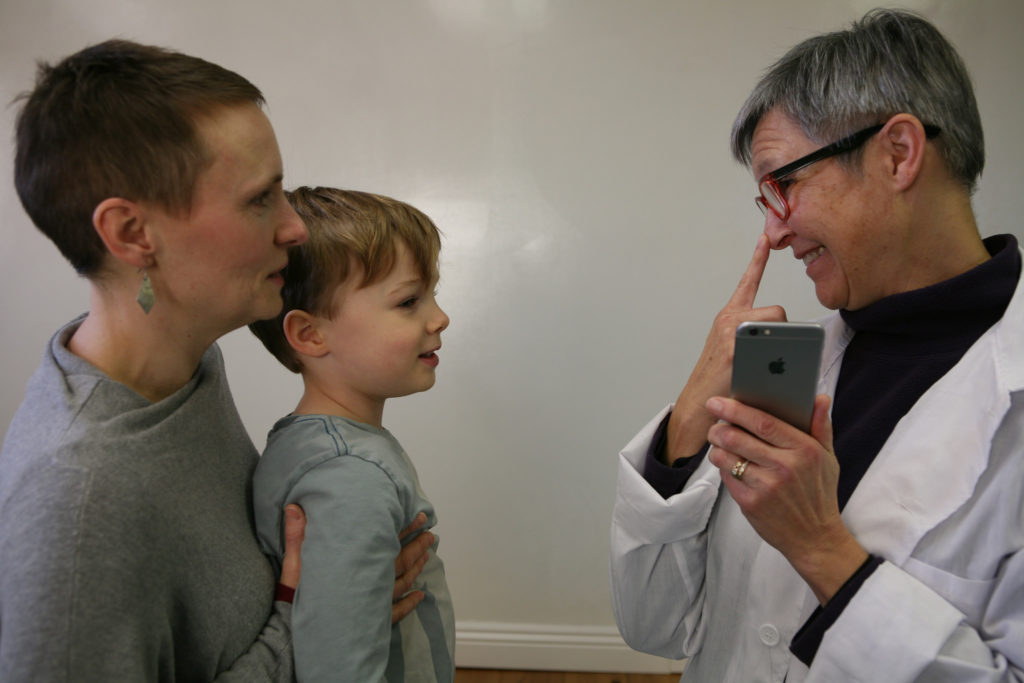A new study, published in The Journal of Child Psychology and Psychiatry, assessed the efficacy of two trauma-informed brief psychotherapies for the treatment of Posttraumatic Stress Disorder (PTSD) in children and adolescents who experienced a single traumatic event. The randomized clinical trial compared Eye Movement Desensitization and Reprocessing Therapy (EMDR) and Cognitive Behavioral Writing Therapy (CBWT) with a waitlist control. The results of the study, conducted in the Netherlands, suggest that both EMDR and CBWT are effective treatments for childhood PTSD.
“Both EMDR and CBWT yielded high rates of diagnostic remission from (sub threshold) PTSD with attrition during treatment being extremely low, supporting the feasibility and tolerance of both treatments,” write the researchers, led by Carlijn de Roos from the Netherlands Mental Health Organization Rivierduinen.

Meta-analyses suggest that 16% of youth who experience trauma would meet the criteria for PTSD, which can have a significant impact on well-being and functioning from childhood into adulthood. Therefore, the authors push for early, effective treatments for children and adolescents diagnosed with PTSD.
Trauma-focused psychological therapies are the recommended first-line treatment for children with PTSD (see here, here, and here). EMDR is a brief, trauma-focused therapy where an individual holds an image from their trauma experience while making bilateral eye movements. EMDR has been shown to help adults with PTSD but has not been well studied in children. CBWT is a child-friendly, trauma-focused treatment where individuals write out their trauma narratives with the support of a therapist. CBWT facilitates exposure to traumatic memories and the opportunity to re-examine one’s beliefs about the trauma.
The researchers sought to evaluate the efficacy of EMDR and CBWT for children, ages 8-18, who experience a single traumatic event and present with PTSD or subthreshold PTSD symptoms. A total of 103 participants were recruited from seven mental health clinics in the Netherlands from 2010-2013 and randomly assigned to EMDR, CBWT, or waitlist control.
The waitlist group started either EMDR or CBWT treatment after six weeks. EMDR and CBWT treatment included up to six weekly individual sessions lasting for a maximum of 45 minutes. Researchers collected data from both children and their parents. The primary measures were PTSD symptoms and whether participants met diagnostic criteria for PTSD.
The researchers find, “both treatments yielded clinically significant reductions in child- and parent-reported symptoms of PTSD, anxiety, depression, and behavior problems – and negative trauma-related appraisals reported by the child.” The benefits of treatment remained significant at the 3- and 12-month follow-ups. In fact, participants in the EMDR group had 100% remission at the 12-month follow-up.
The authors highlight the very short amount of time participants spent in treatment: an average of fewer than 2.5 hours for EMDR and less than 4 hours for CBWT. Therefore, they suggest that for children and adolescents who experience a one-time traumatic event, even very brief treatments may be helpful. This may free up resources for children who experienced multiple or complex trauma and may need additional supports. The authors call more research on effective trauma-informed psychotherapy for children who have experienced multiple traumas.
****
De Roos, C., van der Oord, S., Zijlstra, B., Lucassen, S., Perrin, S., Emmelkamp, P., & de Jongh, A. (2017). Comparison of eye movement desensitization and reprocessing therapy, cognitive behavioral writing therapy, and wait‐list in pediatric posttraumatic stress disorder following single‐incident trauma: A multicenter randomized clinical trial. Journal of Child Psychology and Psychiatry. Advance online publication. doi:10.1111/jcpp.12768 (LINK)















PTSD is the little brother to cPTSD which most d.i.d. sufferers have, so I’ve heard a lot about EDMR, though we never used it. It kind of always sounded like snake oil to me, and as I tried to research it a little this morning, clearly the jury is still out and proponents simply have declared it evidence-based on ambivalent evidence…par for the course in modern science it seems, when they push agendas to get funding rather than being patient and doing the hard work involved to be truly evidence based.
I’m not very familiar with CBT either, so I did a little reading on it as well. I think I used some of its concepts with one of the girls. But from the description it sounds like, used by a therapist, it would be only helpful in relatively simple trauma because as the depth and scope of the trauma increases, the sufferer’s need for strong attachment bonds with someone to help ‘hold’ and walk them thru those memories increases. And of course, the worse the trauma, the more likely dissociation will become an issue, and that adds layers of complexity to the healing process…
I may sound like a broken record, but why not teach parents the clearly proven principles from attachment theory: safe haven and affect regulation? Not only are they good parenting skills to have, but if I was able to untangle a web of 40 year-old trauma events causing PTSD issues in my wife using these principles, they would certainly work in real-time for single trauma events. Moreover, then the parents are no longer beholden to the experts for things that they can do better, freeing the experts to do things they alone can do…
Report comment
I agree that attachment-based therapies get to the core of what’s going on much more effectively for those with long-term trauma. CBT is favored largely because it avoids such issues, as there is a huge “don’t blame the parents” meme that is central to the biological viewpoint. EMDR I think has sensible components to it, including recognizing that traumatic events are the core of the person’s suffering, and I am guessing it’s much more effective than what most people get as therapy or “case management.” I do agree that the eye-movements and tapping and other stuff seem hokey, and I’m guessing they’re probably somewhat ancillary, but telling a narrative of the events in question is no doubt therapeutic for those with specific traumatic events to process. And let’s face it, most people in “the system” have plenty of traumatic events to process. So if it’s a choice between EMDR and treatment as usual, I’d go for EMDR every time, even though I believe attachment-based therapeutic interventions will have more long-lasting results. The other difficulty with attachment-centered therapies is that the therapist has to have their attachment issues under control, and most therapists do not, and engaging in that kind of approach can do a lot of damage with an unenlightened therapist.
Report comment
Name me one “enlightened” therapist.
Report comment
Whenever I see research like this I always wonder how do you account or control for the impact of the relationship with the therapist, the support surrounding the child when not seeing the therapist and other extraneous factors that either help them along or hold them back. But research ala the medical model with it’s seductive simplicity only focuses on one active ingredient and that is the particular technique used or pill swallowed while ignoring the fact that people during the research period live in particular circumstances that have far greater and lasting impact on how they feel and make sense of things
Report comment
Getting on for three weeks and not one enlightened therapist named…
Report comment
I have wondered about EMDR ever since I tried it, which is quite some years ago.
After my session I went home and had the most searing headache, which was so bad, it did not seem like a headache.
I looked at it a bit through google since the therapist seemed not knowledgeable about my headache symptom.
It always takes some time for my own brain to figure out the falsities of something, so I researched it more and looked at so many accounts from users on forums and then responses from therapists.
The therapists mentioned stuff like possible DID, or EGO.
So first thing my brain does is latch onto that idea and freaks me out.
Then I came upon a post that finally spoke to me about my EMDR experience and it made me glad I quit. I also tried tapping years ago, which made me feel foolish.
I also tried CBT, well really I didn’t past the first few exercises, because I seem to quit things that don’t speak to me.
I have become suspicious of much, especially when descriptive words are brought in, like EGO, and all these people know all about EGO, and how you cure and fix it and break it and rebuild it.
The info out there is crazy making and most often makes me feel as if I am at a shrinks who is using a different modality.
I think to play with people’s brains is quite the undertaking, and it is an area where you should have almost/or 100% success, or minimum NO DAMAGE. And since no one knows how the brain works, why risk? I used my own two fingers for 4 back and forths and within a half hour I had a weird headache, but very mild. Nope, not for me. Must be because I am this or that, that must be why I can’t do it.
Everyone has an explanation, or denies the therapy caused it. It is common for people to defend their beliefs. It’s just not enough to have beliefs, in the case of another person’s brain.
And kids? Kids that can’t even voice what it is they are feeling?
http://tara-miller.com/emdr-trauma-treatment/
Report comment